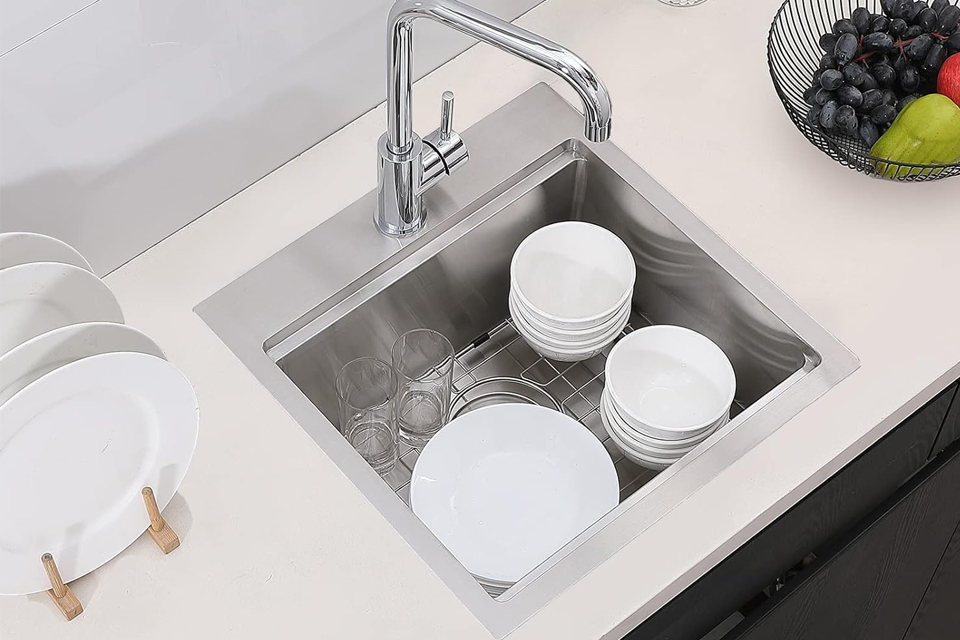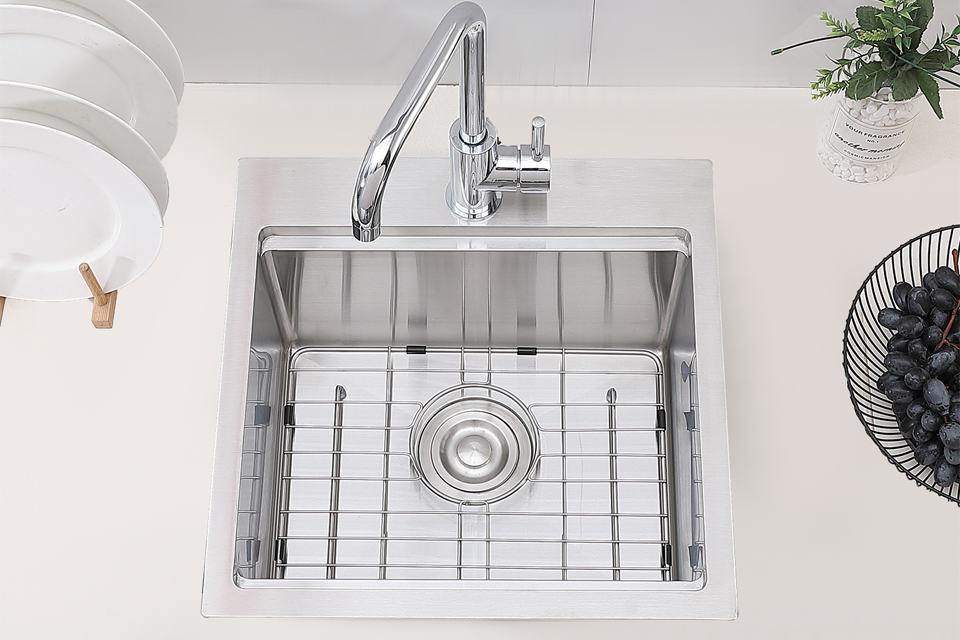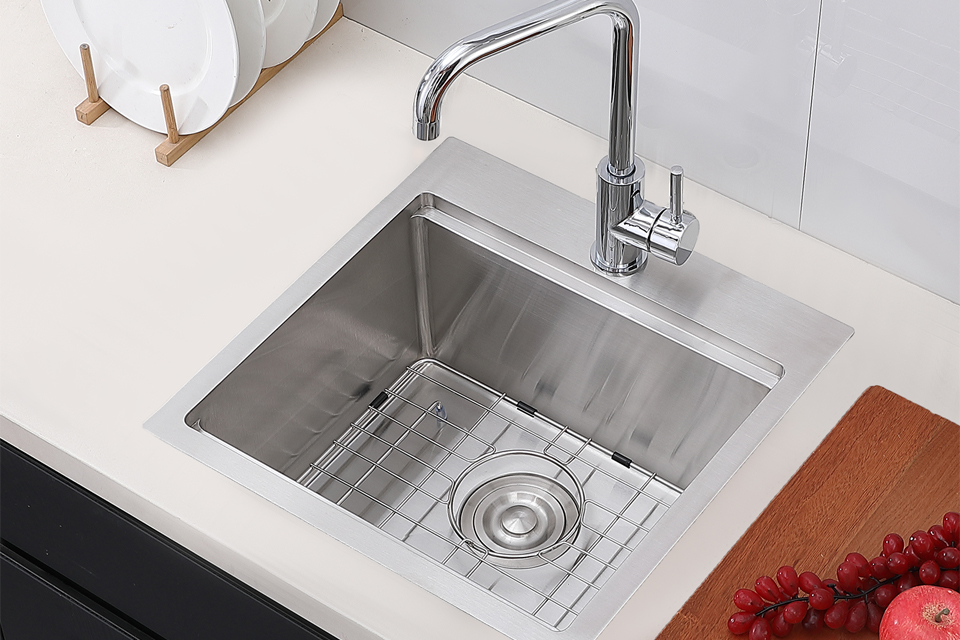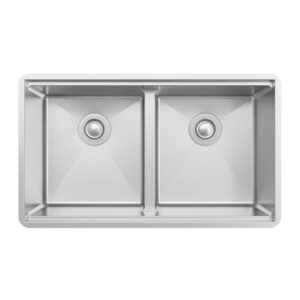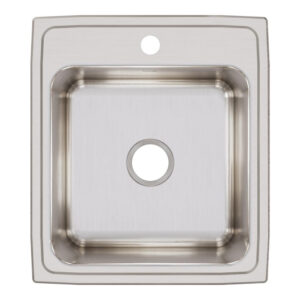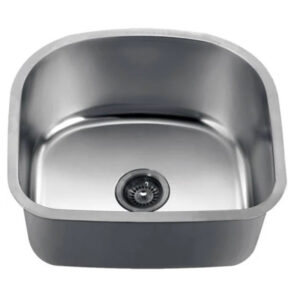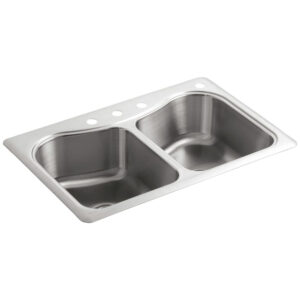
How To Choose a Good Quality Stainless Steel Kitchen Sink
Table of Contents
With numerous options available, making the best choice can be overwhelming. This article will guide you through the essential factors to consider when selecting a high-quality stainless steel sink, helping you find the perfect fit for your kitchen’s needs and style.
What Makes Stainless Steel a Popular Choice for Kitchen Sinks?
Stainless steel has long been a favorite material for kitchen sinks due to its durability, resistance to corrosion, and timeless appeal. The material is made by combining steel with chromium, which provides its rust-resistant properties. Stainless steel sinks are available in a range of finishes, from matte to polished, allowing you to find one that matches your kitchen design perfectly.
Key Features of Stainless Steel Sinks:
- Durability: Resistant to rust, corrosion, and stains.
- Versatility: Complements various kitchen styles, from modern to traditional.
- Maintenance: Easy to clean and maintain, requiring minimal effort.
Understanding the Gauge: Why It Matters in Stainless Steel Sinks
The thickness of stainless steel is measured in gauges, with lower numbers indicating thicker steel. When it comes to kitchen sinks, gauge plays a crucial role in determining the sink’s strength, durability, and noise level. Thicker gauges, such as 16 gauge, offer better resistance to dents and noise, making them a preferred choice for high-end kitchen sinks.
Why Gauge Matters:
- Thicker Steel: Lower gauge numbers (like 16) mean thicker and more durable steel.
- Noise Reduction: Thicker sinks are quieter, reducing the sound of running water and clattering dishes.
- Dent Resistance: A thicker gauge sink is less likely to dent from heavy cookware.
16 Gauge vs. 18 Gauge: Which is Better for Your Kitchen Sink?
16 Gauge Stainless Steel Sinks:
- Thicker and More Durable: 16 gauge sinks are thicker, providing superior durability and resistance to dents.
- Quieter: The thicker material absorbs more sound, making the sink quieter during use.
- Higher Cost: Due to the increased material, 16 gauge sinks are typically more expensive.
18 Gauge Stainless Steel Sinks:
- Slightly Thinner: 18 gauge sinks are thinner but still offer excellent durability for most kitchen needs.
- More Affordable: These sinks are generally more budget-friendly while still being robust and reliable.
- Slightly Louder: The thinner material may result in more noise during use.
How to Identify the Best Grade of Stainless Steel for Sinks
Stainless steel comes in different grades, which indicate the quality and composition of the steel. For kitchen sinks, the most common grades are 304 and 316, both of which offer excellent resistance to rust and corrosion.
Grade 304 Stainless Steel:
- High Chromium Content: Contains around 18% chromium and 8% nickel, making it highly resistant to corrosion.
- Affordable and Durable: 304 stainless steel is widely used in kitchen sinks due to its balance of cost and durability.
Grade 316 Stainless Steel:
- Enhanced Corrosion Resistance: Contains molybdenum, which provides extra protection against rust, especially in salty environments.
- Premium Option: Often used in marine environments, 316 stainless steel is a higher-end option for those seeking maximum durability.
Durability and Scratch Resistance: What to Look For in a Sink
Durability is a key factor when selecting a stainless steel kitchen sink. High-quality stainless steel sinks are designed to withstand daily use, including heavy pots and pans, without showing signs of wear.
Scratch Resistance:
- High-Grade Stainless Steel: Opt for sinks made from 304 or 316-grade stainless steel, which are more resistant to scratches.
- Brushed Finish: A brushed or matte finish can help conceal minor scratches, maintaining the sink’s appearance over time.
Long-Lasting Quality:
- Thicker Gauge: Choose a sink with a thicker gauge (16 or lower) for enhanced durability and longevity.
- Proper Care: Regular cleaning with non-abrasive products can help maintain the sink’s finish and prevent scratches.
The Role of Sink Design in Functionality
The design of your stainless steel sink can greatly impact its functionality and how well it fits into your kitchen layout. Whether you prefer a single-bowl, double-bowl, or apron-front sink, each design offers different benefits.
Single-Bowl Sinks:
- Spacious: Ideal for washing large pots and pans.
- Streamlined Design: Offers a clean, modern look in the kitchen.
Double-Bowl Sinks:
- Versatile: Allows for multitasking, such as washing dishes in one bowl and rinsing vegetables in the other.
- Traditional Appeal: A popular choice for classic kitchen designs.
Apron-Front Sinks:
- Farmhouse Style: Adds a rustic, yet elegant touch to the kitchen.
- Deep Basin: Provides ample space for washing large items.
Choosing the Right Size and Depth for Your Kitchen Sink
Selecting the correct size and depth for your stainless steel sink is essential for ensuring it meets your kitchen needs. The size of the sink should complement the size of your kitchen and countertop space.
Standard Sizes:
- 24 to 36 Inches: Most stainless steel kitchen sinks range between 24 and 36 inches in width.
- Undermount or Drop-In: Consider the installation method when choosing the size, as undermount sinks require more precise measurements.
Depth Considerations:
- 8 to 10 Inches: A depth of 8 to 10 inches is typical for stainless steel sinks, offering enough space for washing dishes and preventing water splashes.
- Deep Sinks: Deeper sinks (10 inches or more) are ideal for larger households or avid cooks who need extra space.
Evaluating Sink Finish: Matte vs. Polished Stainless Steel
The finish of your stainless steel sink can affect its appearance and maintenance. Matte and polished finishes each offer distinct advantages depending on your preferences.
Matte Finish:
- Conceals Scratches: A brushed or matte finish hides scratches and water spots more effectively.
- Low Maintenance: Easier to maintain as it does not require frequent polishing.
Polished Finish:
- Sleek Appearance: A polished finish offers a shiny, reflective surface that adds a modern touch to the kitchen.
- Requires More Care: Prone to showing fingerprints and water spots, requiring regular cleaning to maintain its look.
Why Faucet Compatibility is Important When Selecting a Sink
When choosing a stainless steel kitchen sink, it’s essential to consider faucet compatibility. The faucet should complement the sink in terms of both style and functionality.
Single-Hole vs. Multi-Hole:
- Single-Hole Faucets: Ideal for a minimalist look and easy installation.
- Multi-Hole Options: Allow for additional accessories, such as soap dispensers or spray hoses.
Faucet Height and Reach:
- High-Arc Faucets: Provide more clearance for washing large items.
- Extended Reach: Ensures the faucet can reach all areas of the sink, improving functionality.
Tips for Choosing a Long-Lasting, High-Quality Stainless Steel Sink
To ensure you choose a stainless steel sink that will last for years, consider the following tips:
- Opt for a 16 or 18 Gauge Sink: Thicker steel offers better durability and resistance to dents and noise.
- Choose a Reputable Brand: Look for brands with a history of producing high-quality stainless steel sinks.
- Consider the Finish: A brushed or matte finish may be more practical for hiding scratches and water spots.
- Check for Sound-Dampening Features: Some stainless steel sinks come with pads or coatings that reduce noise during use.
Final Thoughts
Choosing the right stainless steel kitchen sink involves considering various factors such as gauge, material grade, design, and finish. By understanding these aspects, you can select a sink that not only meets your kitchen’s functional needs but also enhances its overall aesthetic. Whether you opt for a 16 gauge, 18 gauge, or a sink with a specific finish, ensuring you pick a high-quality stainless steel sink will provide long-lasting value and satisfaction in your kitchen.
This article outlines the key considerations when choosing a high-quality stainless steel kitchen sink, ensuring you make an informed decision that enhances both the functionality and beauty of your kitchen.
Comments

A Complete Guide: How to Install a Farmhouse Sink
Installing a farmhouse sink is a fantastic way to transform your kitchen with both style and functionality. These iconic sinks, also known as apron-front sinks, have become increasingly popular due to their deep basins and elegant design.
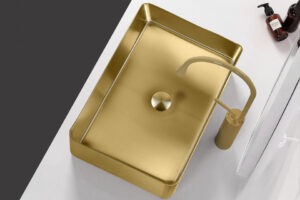
Choosing the Right Sink for Your Bathroom Remodel: A Complete Guide
When planning a bathroom remodel, one of the most important decisions you’ll make is choosing the right sink.
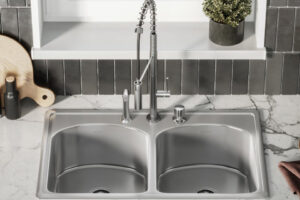
The Best Ways to How to Clean a Stainless Steel Sink
Keeping your stainless steel sink clean and shiny not only enhances the look of your kitchen but also prolongs the lifespan of your sink.
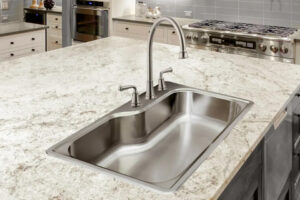
How to Clean Your Stainless Steel Sink Like a Pro
Keeping your stainless steel sink clean and sparkling not only enhances the overall look of your kitchen but also ensures long-term durability and hygiene.
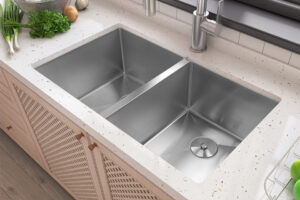
How to Seal Your Kitchen Sink to the Countertop: A Complete Guide
Sealing your kitchen sink to the countertop is a crucial step in ensuring a long-lasting, leak-free installation.
Tags
Related Blog
Learn the newest trends and common knowledge from our blog in stainless steel sinks business.
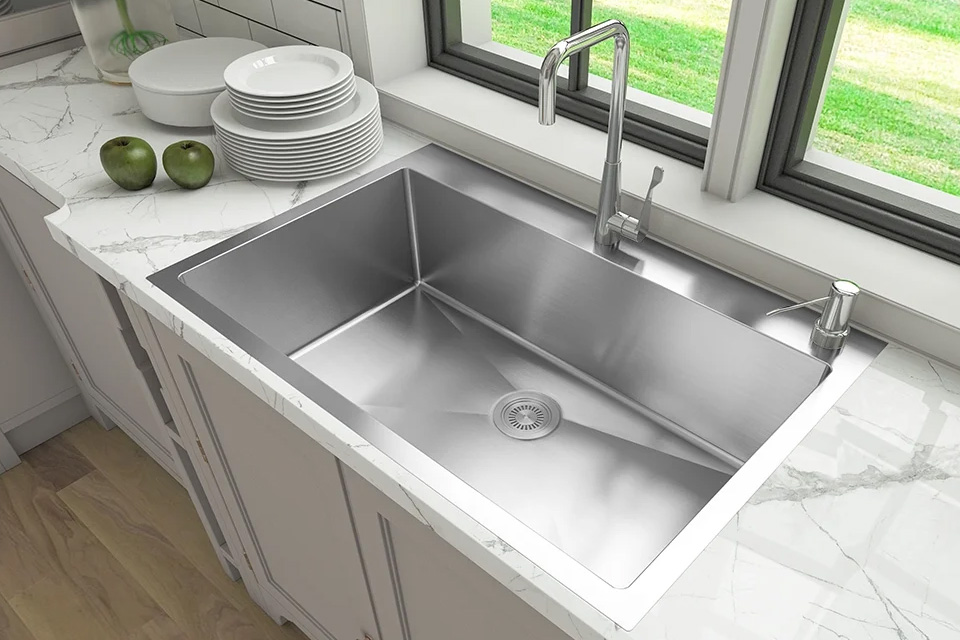
What Are The Advantages of Stainless Steel Kitchen Sinks
Stainless steel sinks are a popular choice for kitchens, known for their durability, ease of maintenance, and sleek design.
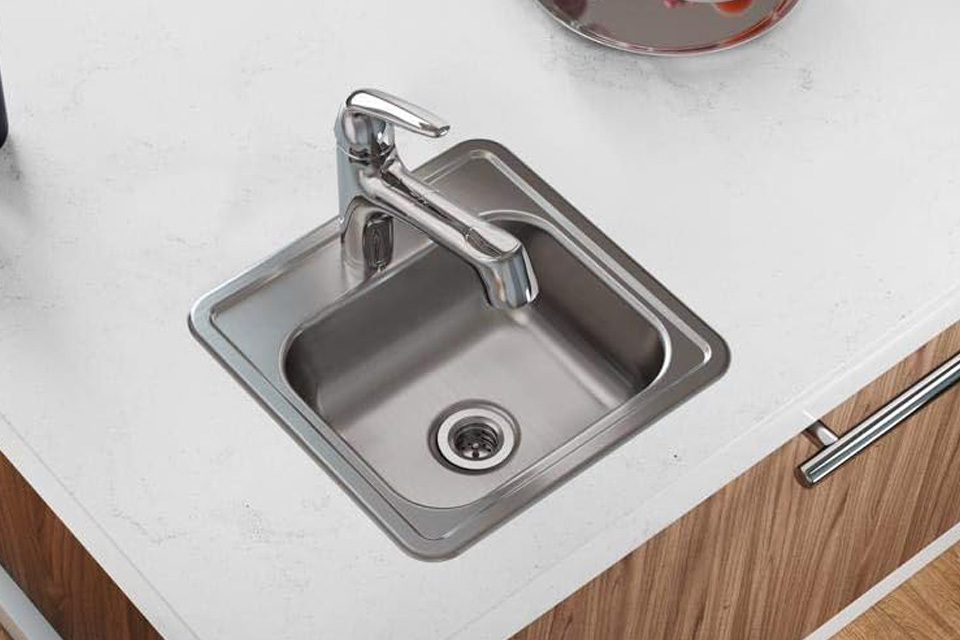
How To Choose a Good Quality Stainless Steel Kitchen Sink
Choosing the right stainless steel kitchen sink can significantly impact both the functionality and aesthetics of your kitchen.

Choosing the Right Sink for Your Bathroom Remodel: A Complete Guide
When planning a bathroom remodel, one of the most important decisions you’ll make is choosing the right sink.

